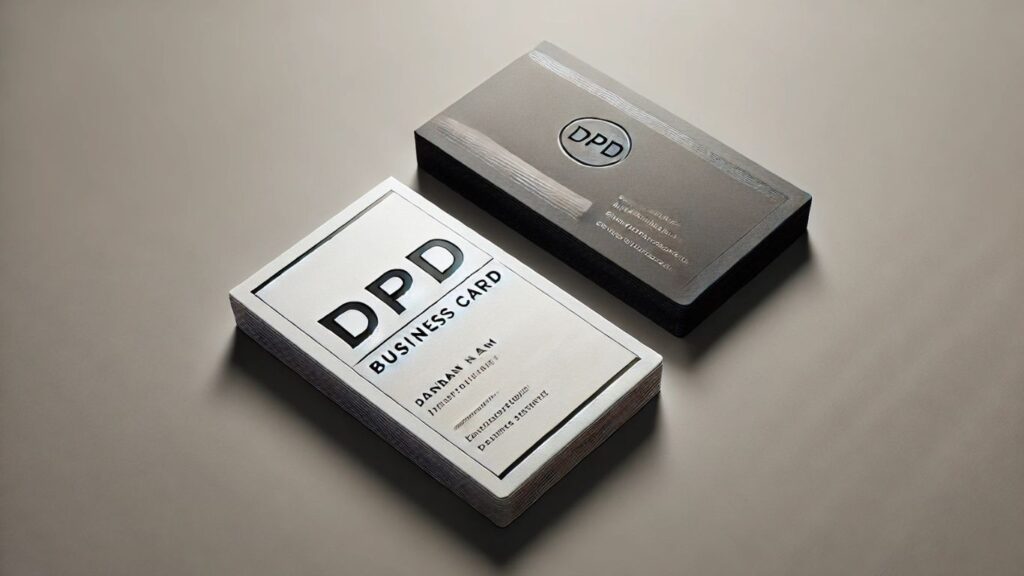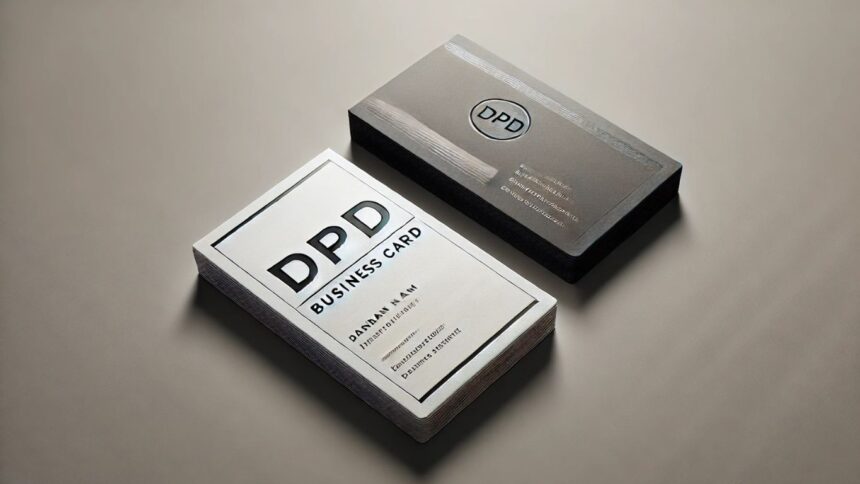Table of Contents
Dpd business cards are essential tools in any professional setting. They act as physical reminders of your services, make a solid first impression, and are effective for personal branding. For a company like DPD, which emphasizes reliability in logistics and delivery, designing a professional business card is crucial. In this guide, we’ll go through every aspect of designing an effective business card tailored to DPD.
Why Business Cards Matter in Logistics
Business cards are more than just a way to share contact information. For companies like DPD, they communicate your brand’s reliability, professionalism, and commitment to service quality. A well-designed card can:
- Make a positive first impression
- Help clients remember your company
- Reinforce your brand image
- Differentiate you from competitors
In logistics, where personal trust is a significant component, a memorable and high-quality business card can make a big difference.
Key Elements of DPD Business Cards
To create a compelling business card for DPD, consider the following elements:
1. Company Branding and Logo
The DPD brand is synonymous with timely and dependable delivery services. Therefore, incorporating the company logo prominently on the card will build instant brand recognition. The logo should be clear, high-resolution, and adhere to DPD’s official color scheme (typically red, black, and white).
Tips for Logo Placement:
- Position the Logo Prominently: Place it in the top left or center, depending on the layout.
- Use Brand Colors: Make sure that the logo is in DPD’s signature red and black colors to ensure brand consistency.
- Maintain Size Proportion: The logo should be visible but not overwhelming.
2. Contact Information
Business cards are, fundamentally, a means to share contact information. For a DPD business card, consider including the following:
- Name and Position: This personalizes the card and makes it clear who the point of contact is.
- Phone Number: Ensure that it’s a direct line for quick communication.
- Email Address: Use a professional, company-specific email address.
- Physical Address: Including a DPD office address adds credibility.
- Website URL: A link to DPD’s website allows clients to access further information easily.
Best Practices for Contact Details:
- Readable Font Size: Use a font size that’s easy to read without overwhelming the card.
- Minimalism: Avoid overcrowding. Prioritize the most critical details.
- Emphasis on Position: Highlighting the position builds authority and ensures that clients know whom they’re dealing with.
3. Design and Layout
Your business card’s layout should reflect DPD’s brand values: reliability, efficiency, and clarity.
Considerations for Layout:
- Grid-Based Layout: Using a grid makes the card visually organized.
- Symmetry and Balance: Keep elements centered or symmetrically aligned.
- Whitespace Usage: Leave sufficient space between elements to avoid clutter and enhance readability.
4. Material and Finish
The choice of material affects how clients perceive your business card.
Common Materials and Finishes:
- Standard Card Stock: Durable and cost-effective; suits most business cards.
- Glossy Finish: Adds a professional shine and enhances colors.
- Matte Finish: Provides a non-reflective look and feels more sophisticated.
- Laminated Cards: Extra durability, protecting against wear and tear.
5. Colors and Typography
For DPD business cards, use brand-specific colors and a clear, professional font.
Color Scheme:
- Primary Colors: Use DPD’s signature red and black as dominant colors.
- White Space: A white background can make red and black text stand out.
- Accent Colors: Consider subtle accents for specific sections, like contact information.
Typography:
- Font Selection: Choose a font that is simple, professional, and legible.
- Hierarchy: Use font size and weight to emphasize specific information, like the name and position.
- Consistency: Stick to one or two fonts to maintain a cohesive design.
Step-by-Step Guide to Designing a DPD Business Card
Step 1: Define Your Purpose and Audience
Before you start designing, think about the purpose of your business card. Are you targeting corporate clients, or are you networking with other professionals in the logistics industry? Understanding your audience will help you tailor the card’s tone and design.
Step 2: Choose a Template
Using a template ensures a clean and professional look. Many online design tools provide business card templates, or you can work with a graphic designer to create a custom template that aligns with DPD’s brand.
Step 3: Customize the Layout
Arrange the logo, contact information, and any additional graphics. Keep the layout balanced by following the grid-based approach discussed earlier.
Step 4: Add Contact Details
Fill in the name, position, phone number, email address, and office address. Double-check for accuracy, as errors in contact information can reflect poorly on your professionalism.
Step 5: Select Colors and Fonts
Choose DPD’s brand colors for consistency. Select fonts that are easy to read, even in small sizes, and establish a clear hierarchy to guide the reader’s eye.
Step 6: Finalize Material and Finish
Decide on the type of paper and finish you want. Matte or glossy finishes work well for professional business cards, while laminated cards add extra durability.
Step 7: Print and Review
Before mass-printing, request a sample to review the quality of the design, material, and colors. Ensure everything looks as intended and that there are no errors.

Common Mistakes to Avoid in Business Card Design
1. Overcrowding the Card
Including too much information can make a business card look cluttered. Focus on essential contact details and avoid unnecessary graphics.
2. Using Low-Quality Images
Always use high-resolution images and logos. Blurry visuals reduce the card’s professional appeal and reflect poorly on the brand.
3. Ignoring Brand Consistency
Sticking to DPD’s colors, logo, and typography guidelines ensures that the business card aligns with the overall brand image. Avoid using off-brand colors or fonts.
4. Choosing an Unreadable Font Size
While it’s tempting to include everything on a business card, ensure the text is large enough to be easily read without straining the eyes.
Conclusion
Dpd business cards Designing an effective DPD business card involves more than just placing contact details on a small card. Every design choice, from the logo and color scheme to the font and material, contributes to how clients perceive the company. By following these guidelines, you can create a card that reflects DPD’s values of reliability, professionalism, and efficiency, leaving a lasting impression on clients and partners alike.
Frequently Asked Questions (FAQs)
Q1: Can I include a QR code on my DPD business card?
A: Yes, including a QR code can be a smart way to provide additional information without crowding the card. For example, the QR code can link to a digital contact card, website, or service information.
Q2: Should I print my DPD business cards in bulk?
A: Printing in bulk is cost-effective, especially if the design won’t change frequently. However, if you expect to update contact details or branding elements soon, consider ordering a smaller batch first.
Q3: What paper thickness is recommended for DPD business cards?
A: For durability and a professional feel, choose a thicker cardstock around 300-400 GSM. This thickness balances quality with cost-effectiveness.
Q4: How can I make my DPD business card stand out?
A: Unique elements like a QR code, premium materials, and a balanced design layout can make your card memorable. Stick to DPD’s branding but consider creative layout options for added appeal.
Q5: Is it essential to use DPD’s brand colors?
A: Absolutely. Using DPD’s red, black, and white colors is vital for brand consistency and recognition.
4o




